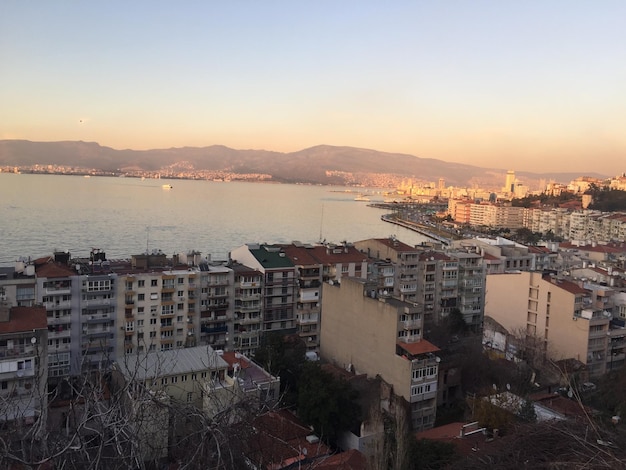
Growing up in Germany, I always found life in Spain fascinating. The warm Mediterranean climate, the rich cultural differences, and the relatively low cost of living made the idea of relocating to southern Europe very appealing.
Spain is renowned for its delicious food and is one of the most affordable places to travel and live. A few years ago, I decided to make the leap and moved to Alicante, Spain for a year to experience the Spanish lifestyle.
In this article, I’ll share what I learned about the cost of living in Spain and offer some tips for those considering a longer stay.
The first step when planning to live in a foreign country is understanding the visa requirements. For Europeans, moving to Spain is straightforward and just requires updating your residency registration. For non-Europeans, it’s a bit more complicated.
After submitting the necessary documents at the local police station, you’ll get your Certificate of Residence (NIE). This is crucial for managing living expenses in Spain, and I’ll explain its importance later.
If you’re a non-European planning to stay longer than three months, applying for official residency is more involved but doable. It’s important to handle this for the benefits it brings, especially considering Spain’s lower cost of living. You can only rent a place in Spain if you have proof of residency, emphasizing the importance of the NIE.
Timing is key for finding good accommodation. It’s difficult to find affordable apartments in major cities or popular coastal areas during the summer months. It’s better to start your search after September when the tourist rush subsides. Websites like Fotocasa are helpful, but contacting owners directly is often more effective.
Depending on your standards and chosen city, you can find a small two-bedroom apartment for about €550-650, or a spacious, modern one for around €850. Often, short-term rentals (one-year contracts) come furnished, which can be a budget saver.
In cities like Madrid or Barcelona, accommodation costs more. For short stays, checking out sites like Booking.com can be useful.
For groceries, Spain offers various options. Corner stores are convenient with local products but can be pricier. Franchise supermarkets like Aldi, Lidl, and Carrefour are more affordable and have a wider selection.
Here’s a rough cost breakdown for groceries at local stores in Alicante:
– Whole milk (1 liter) €1.20
– Cheese (200 g) €3.00
– Meat (150 g) €2.50
– Local eggs (10) €2.00
– Tomatoes (3) €1.00
– Oranges (3) €0.60
– Loaf of white bread €1.50
– Bottle of red wine €3.50
– Single beer can €1.20
– 100g chocolate bar €1.50
Supermarkets offer lower prices:
– Milk (1 liter) €0.73-1.20
– Fresh white bread (500g) €0.80-1.30
– Rice (1kg) €0.70-1.80
– Regular eggs (10) €1.00-2.00
– Local cheese (1kg) €3.00-10.00
– Chicken breasts (1kg) €6.00-8.00
– Beef round (1kg) €5.00-20.00
– Apples (1kg) €0.80-2.00
– Bananas (1kg) €1.05-1.50
– Oranges (1kg) €0.65-1.20
– Tomatoes (1kg) €0.80-1.80
– Potatoes (1kg) €0.80-2.00
– Onions (1kg) €0.40-2.00
– Lettuce (1 head) €0.99-1.20
For the best quality and prices, buy regional and seasonal products.
Local farmers’ markets are popular and often cheaper, offering fresh vegetables, fish, olives, and fruits. It’s an excellent way to reduce your cost of living and integrate into the community.
Eating out can be cheap. Tapas bars offer tasty dishes like patatas bravas and boquerones en vinagre, with drinks costing around €1-2. A few tapas or a sandwich (€3-5) can make for an affordable meal.
Typical dining costs:
– Meal in an inexpensive restaurant: €12
– Meal for two in a mid-range restaurant: €30-45
– Domestic beer (0.5 liter draught): €1.50-3
– Imported beer (0.33 liter bottle): €3
– Cappuccino: €1.70
– Croissant: €1
– Bocadillo: €4
– Water (0.5 liter bottle): €1.50
Paella at a restaurant costs €15-20 per person but is usually served in large portions.
Spain has an excellent public health care system, highly rated globally. With residency or an EHIC card, many health services are free. Each local area has designated health centers where you can see a general practitioner who can refer you to specialists.
Owning a car in Spain isn’t too expensive, with decent second-hand cars available for €1,500-2,000. Renting a car for short periods is another affordable option, with fuel costing around €1.90/liter. Public transport, including high-speed trains and buses, is reliable and often affordable. Monthly tickets or multi-ride passes can save you money.
In major cities:
– Barcelona: 10 Journey Ticket or a monthly pass for €40.
– Madrid: 30-Day Season Ticket or a Young Person’s Season Ticket for those under 25.
Stable internet and a good data plan are essential, especially for digital nomads. Major providers like Ono, Movistar, Vodafone, and Orange offer flexible, no long-term contract deals. Research is key to finding the best service in your area.
Free activities in Spain help keep entertainment costs low. The beach is a great social spot for swimming, sports, or relaxing. Festivals like Hogueras in Valencia bring communities together with parades and celebrations. Spain also offers fantastic hiking and mountain biking in its beautiful countryside.
Wine tasting in local vineyards is a budget-friendly activity, usually costing €5-10.
Here’s a monthly budget for two people in Alicante:
– Rent: €500
– Utilities: €50 (sometimes included in rent)
– Groceries: €200-300
– Eating out: €100-150
– Health insurance: Free with residency or EHIC card
– Transport: €10-40 (fuel or public transport)
– Internet: €50
– Entertainment: Mostly free
Total monthly expenses: €1,050
Spain is an affordable and vibrant country rich in culture and history, with friendly locals. I fell in love with Spain, and it feels like a second home to me. I hope this article helps you plan your budget for living or traveling in Spain.



